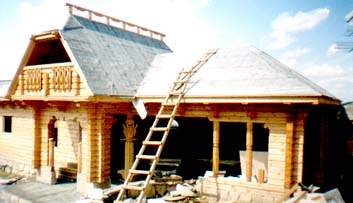
CONSIDERATIONS CONCERNING BUILDING OF A RUSSIAN BATH WITH AN INCREASED COMFORT FEATURES

As you know, temperature and humidity conditions in a bath can be different. The relative humidity can vary from 3 to 100 %. The air temperature in the bath varies from 30 to 150 %.
The whole wide range of various types of baths all over the world lies within this limit.
There are many opinions concerning temperature and humidity in a Russian bath. In order to understand what you are going to have, I recommend you to read an article " Russian bath and its place in the world’s bath’s culture" on our site: http://www.parilka. ru/rus_bath_place.php or in the article with the same name in BANBAS magazine, 4(16)/2001.
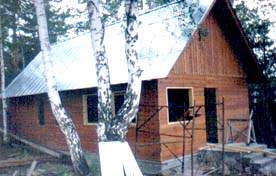
The article also devotes much attention to the problem of steam generation.
The author of the article Mr. A. Razorenov suggests brilliant ideas to adjust temperature and humidity parameters in the steam room. Using his technology it is possible to obtain in the steam room temperature and humidity parameters of steam and wet sauna. A question concerning stove construction that makes it possible to create in the steam room the required temperature and humidity parameters is viewed upon below. This is to be considered while choosing the necessary bath stove.
P.P. Evseev expressed another opinion ( see his book "How to build a Russian and a Finnish bath", page 9). Depending on the humidity of the atmosphere in a steam room the baths are subdivided into baths with dry steam and those with wet steam. In the bath having wet steam the air is heated up to 55-60 °C, and relative humidity is 40-60 %. Such conditions are normally found in public baths where superheated steam is being conducted through the pipes to heat the steam room.
In the dry steam bath the steam temperature is being increased up to 110-120 °C, sometimes even to 140°C , and in order to avoid overheating the relative humidity is maintained at
5-6 %. Such conditions are normally created in a Finnish bath.
The traditional Russian bath occupies an intermediate position in regard to the heating mode: the ideal temperature is 70 to 90 °C, relative humidity up to 30%.
Practically, my experience of several years’ standing concerning erection and operation of the baths shows that these two modes ( temperature of 45-65 °C at 40-65 % of humidity) and 70 to 90 °C and humidity of up to 30 % are widely used in Russia. The temperature and humidity modes in the bath depend to a great extent on the way hot water and steam are prepared. At water boiling (heating) point the steam fills the steam room, it cools down and increases humidity ( moisture) in it. In order to heat the steam room in this case much more heat is needed An artificial air humidification is needed before using a bath. It is necessary to evaporate water ( prepare vapor) on highly heated stones, and this is possible only in closed volume of the stove. Vapor preparation on the open, poor heated stones seems to be impossible.
Such modes can be obtained only using well designed stoves made of brick. It should be also considered that such stoves have a large heat capacity, and it is not possible to prepare the bath within a short period of time. In order to obtain maximum temperature on the stove surface the duration of heating shall be within 2.5 to 3.5 hours. After that there is time needed for the bath elements to get warmed through. The time needed for the preparation of the bath can be shortened using electric heaters of small capacity that is built in the stove and is constantly operating.
A bath is considered to be good not only by the temperature and humidity parameters in a steam room but also by a number of other factors that influence the comfort during all the stages of bath usage. Functional requirements in regard to bath are getting more important.
Any person who wants to build a bath has to consider which layout is to be accepted. What is to be done to make the bath be warm and to maintain the necessary temperature and humidity parameters, etc? Let’s try to answer these questions. It shall be remembered that the answers to these questions will be different, depending on the type of bath you are going to build: a bath with a wooden stove heating, a bath with central heating and warm water supply or a bath with an individual heating, vapor and hot water supply if natural gas or a safe supply of electricity are fed to it.
Let’s consider questions of designing an individual Russian bath with a stove using wood. Our regional representative in Moscow " Parilka.ru" www.rusbanya.com considers that the main feature of a Russian bath, its base is stone heat accumulator. I agree with this opinion. Stone heat accumulator is the heart of a Russian bath.
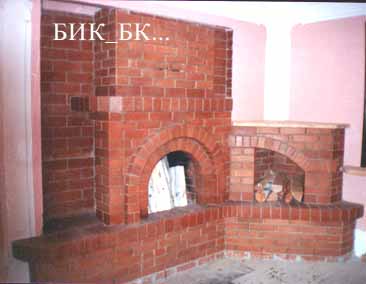
It shall:
Availability of a fire-place ensures a new level of comfort while making use of a bath.
As practice showed, such stoves may ensure the maintenance of required temperature and humidity of the steam sauna ( Russian bath) or wet sauna, depending on the extent of heating.
A stove made of metal heats the air in a steam room relatively quick and is efficient.
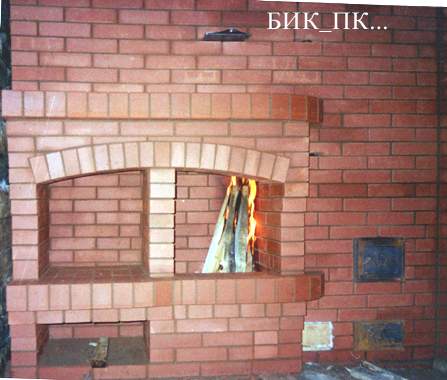
Such stoves cannot be used effectively for heating of the steam room, washing and rest rooms, as well as hot water and vapor preparation due to the difficulty of meeting sanitary and hygienic conditions, observing fire prevention measures as well as questions concerning sealing of rest, washing and steam rooms. The stove does not satisfy items 1,2,3,4,5,6,9,10.
It is advisable to install such stoves in a steam room with central heating and water supply or with individual heating and hot water supply if natural gas or safe electricity supply is provided.
The use of home-made metal bath stoves (which are widely spread in Russia in private gardens or in country-cottages) is inexpedient as they do not meet the requirements of items 1,2,3,4,5,6,9,10.
The same can be said about metal and brick stoves with addition of item 8. One should choose such layout and design of a bath that provides maximum advantages of a Russian bath as well as comfort while making use of it. How many sections it should consist of? It is better to have three warm sections: rest room (or cloak-room), washing room, steam room (the entrance to the latter shall be from the washing room).
Not everybody may take a wash in the washing room which is combined with the steam room at high temperature.
Let’s call the volume of the compartment which includes these three sections restricted by wall structures and which requires heating a thermal circuit. When using a bath in cold season it is necessary to have a lobby at the entrance into the rest room.
It is not good when the wind gusts or snow can come into the rest room when you open the door. The calculations of heating are usually made for the cold seasons of the year, therefore, as practice shows, in a bath which is constructed in a right way it is comfortable in the rest room in winter, and it is hot in summer. In order to ventilate the room one has to open the door. It is advisable to make a closed summer verandah in front of the lobby with an entrance from the street and an entrance into the lobby with an area of 20-25 m2 and more ( all undertakings in a nasty weather shall be conducted on the verandah).
In this case it is convenient to install a summer shower ( it is pleasant to pour cold water over oneself after visiting a steam room.) from one side and a wood storage under roof from the other side ( it is advisable to have it under the same roof with the bath).
Let’s come back to laying out a thermal circuit. One has to start from the stove. One has to choose a location for the stove from which it could heat all the three sections. In each section it is necessary to maintain the necessary temperature: 55-75 ° C in a steam room (the temperature gets higher if you pour some hot water over the stones), about 40° C in a washing room and approximately 20-24 ° C in a rest room.
The attempts to increase temperature in the steam room ( dry sauna) by means of using more wood for burning will lead to additional consumption of wood and to premature destruction of the stove. It should be remembered while making a bath layout that it is not a public bath, that the washing and the steam rooms are used simultaneously by two or three men, and it is necessary to obtain an optimum temperature and moisture parameters. Due to that they shall have minimum measurements as per the area and volume. The height in the washing and in the steam rooms shall be 2-2.2 meters. The volume of the steam room shall be about 12 m3, and approximately 10 m3 in the washing room. The height of the rest room shall be about 40 cm more than the height in the washing room, the area shall be about 10-20 m2.
It is good when there is a fire-place in the rest room. In this case a crew of 4 to 8 men can have a good rest, get a wash, sit by the fire-place, etc.
Such a bath can easily be used as a guest house.
The requirements to guard constructions of the thermal circuit.
External walls, ceiling, floor, windows and doors shall ensure nominal heat losses. At the same time it shall be remembered that due to moisture condition in the bath, protective guard constructions of the bath ( walls, beam ceilings, floor, windows and doors) shall be warmer by 20-30 % in comparison with the same elements at home. Bath vapor seal shall also take place.
They say there is no bad weather, there is bad clothes. Therefore one should not cut down expenses for jacketing for warmth-keeping. In future these capital investments spent on one occasion only will be more than repaid due to operating costs, improvement of sanitary and comfort conditions. All the calculations shall be made taking into account the conditions of energy saving adopted since January 1st, 2000.
A few hints on the bath construction.
The fundamental parts in a bath under the floor shall be encased for warmth-keeping using mineral wool or plates having a thickness of 5-6 cm. The ground under the floor shall be encased by inorganic moisture-proof warmth-keeping jacket having a thickness which is specified in accordance with thermal resistance which is equal to thermal resistance of the external wall (e.g. expanded clay aggregate or slag with a thick layer of 1.5-2 wall thickness). Herewith the air holes in fundaments (ventilation holes) are not closed, and the floor beams shall be in dry air condition.
It is very important to correctly remove the drainage effluent from the bath. The wooden floor in the seam room and in the washing room is recommended to be made towards drainage grid or slot in the floor under which there is a chute made of galvanized steel. The chute may be done under the partition between the washing and the steam room, having raised it by 1 or 2 cm.. Water drains off into the drain pipe. In most cases the drain removal is run through the drain well. This is a pit 1x1 meter, having a depth of 0.7 m below the freezing depth at the distance of 2-3 meters from the bath. The well is covered with one meter layer of crushed stone and then with soil. The drainage well may have a smaller depth but it should have a bigger width and be covered with expanded clay aggregate to defend the drain zone from freezing. The main thing is to ensure a quick drain of run-offs avoiding their freezing into a non-freezing zone of the drain well. Otherwise freezing of the run-offs takes place in the drain pipe and stratum of ice under the bath floor. It could lead to the increase of moisture under the floor and to rotting of constructions. For the same reason it is not allowed to make cement lining under the floor with gradient towards the drain pipe, the run-offs will get frozen.
The thermal circuit vapor isolation is one of the most important factors in creation of a thermos bottle in the bath. Vapor isolation of the walls shall be made of foil in the steam and washing room and of kraft paper in the rest room. The vapor isolation of the bath wooden beams is to be made with a marly clay solution ( clay after drying practically has no strength) adding 20 % of sawdust, with a thickness of 1-2 cm on boards. Of course, vapor isolation can be performed by other materials, suitable for this aim . The internal partitions are made after the stone is erected with boundary fire barrier as required and clearance for wooden walls yield. In a new wooden bath it is necessary to make yielding clearance above the door and window cases as well as above plank partitions. The clearance value is equal to 3 to 5 % of the yield height. The hole depth shall have yield tolerance of 15-20 mm. The steam room door is made 1.6 m in height and has a high sill so as not to bash the head against the case. Along one of the walls of the steam room they build a shelf having the following dimensions: width 75-80 cm, length190-200 cm. The most suitable distance between the shelf and the ceiling shall be 100 cm. It is also necessary to make a seat along the shelf, having a width of 25 cm.
A fire brake is usually done between the stove and the shelves ( seats). The shelves and the seats shall be made detachable. It is not allowed to close the area under the shelf and the seat in order to avoid doting of the walls. The tank with cold water shall be isolated by heat-insulating and incombustible material to avoid cooling of the washing room.
It is better to use heavy and rigid stones of a round shape of volcanic origin, such as basalt, granite, peridotite, andesite to produce steam when water is split over them.
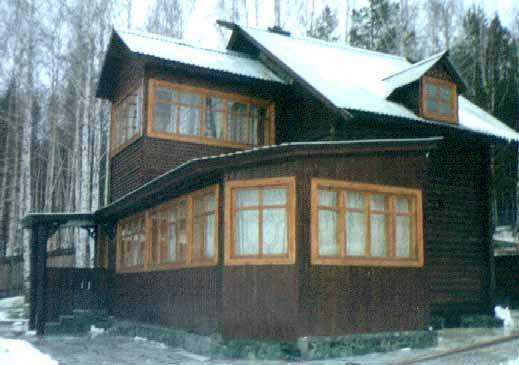
Of course the bath can be made twostoried high with the second floor being heated. The thermal circuit of the second floor can be of any functional designation, and it should be equipped with a corresponding stove. Doing so, recommendations given in the chapter describing the design of the house shall be observed www.stove.da.ru.
Let us come back to the problem of creation the required temperature and humidity mode in a steam room. It goes without saying that here we speak about baths which are mounted in houses or baths that stand separately which are provided with energy supply, and the only thing necessary is to ensure the required temperature and humidity mode in the steam room.
The main elements to solve this task are ventilation system and stove. Let’s consider which functions according to Rosorenov the stone shall provide ( it is called "cold" by the author):
to warm up the room without overheating( to have a possibility of adjusting temperature inside);
to heat the stones to a maximum degree;
to obtain maximum volume of dissociated team;
the stove can be used during heating.
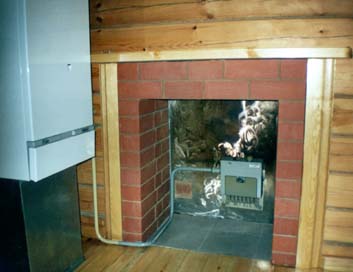
The stoves are provided with an inner refractory shell.
A stove made of high-temperature steel is used for the stones and is made in the form of a hood. Steam outlets are located in the lower zone of the stone. In the upper part of the stove a sealed cover with a dose unit of hot water supply on to the stones with a non-return valve is installed. Through the same cover the stones are initially loaded. Such a solution makes it possible to pass a complete steam phase through the sizzling hot stones and obtain a maximum dissociated steam.
The heat dissipation on the outside walls of the stove does not take place only due to the heat conduction. A combined process of energy transfer due to the heat conduction and convection takes place. This makes it possible to warm up the stones to a maximum degree at relatively cold stove walls (40-50 ° C).
To adjust the temperature in the steam room spiral pipes are installed into the stove. Through these pipes a convective air heating in the steam room takes place. The hot air supply adjustment takes place due to opening or closing of a small door at the spiral pipe inlet in the stove.
I.V. Kuznetsov